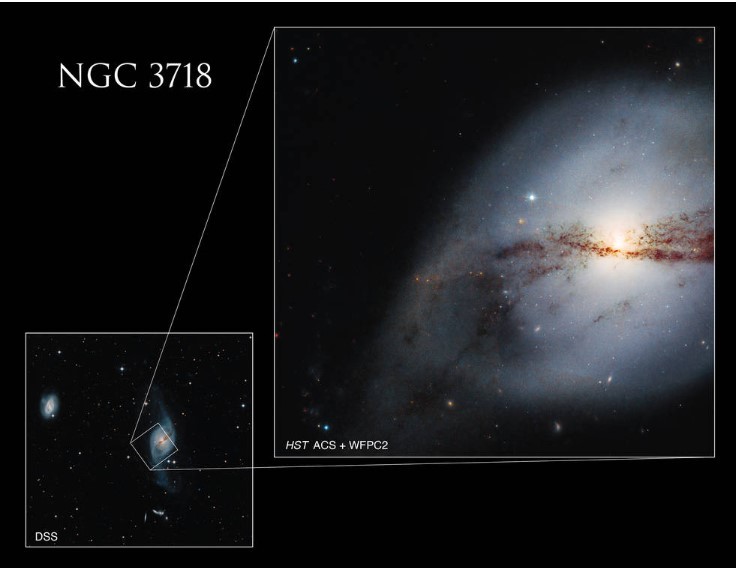
The Digital Sky Survey image (lower left) reveals the portion of NGC 3718 that Hubble scrutinized.
This image depicts the galaxy NGC 3718, which NASA officials say is "a highly disturbed spiral galaxy with an unusual, warped shape that looks a bit like a plump letter 's' from Earth, with a thin thread of dark dust snaking through it."
The galaxy's nucleus is difficult to observe in visible or ultraviolet light because the prominent dust lane blocks much of those wavelengths, but it can be seen in infrared light, which passes through dusty parts.
NASA noted that Hubble's view of NGC 3718 reveals the sinuous, twisting dust lane as it sweeps by the galaxy's core and curves into the surrounding gas in great detail. The galaxy's gas and dust lanes have both been distorted into this unusual configuration.
The peculiar shape of NGC 3718, also known as Arp 214, is hypothesized to be the result of gravitational interaction with neighboring galaxy NGC 3729, another spiral galaxy located roughly 150,000 light-years away. According to Space.com, NGC 3729 is not visible in this particle view of the Hubble Space Telescope.
Read More: #SpaceSnap: Hubble Space Telescope Captures Amazing 'Space Triangle' Created by Colliding Galaxies
This image was captured by Hubble in infrared and visible light as part of a study of the center regions of disk-shaped galaxies with significant star bulges in a variety of environments. As per NASA, the study aimed to shed light on the relationship between the mass of supermassive black holes and the features of galactic bulges, as well as to investigate star formation on a galactic scale, from the nucleus to the disk of a galaxy.
Other Amazing Photos Obtained by the Hubble Space Telescope
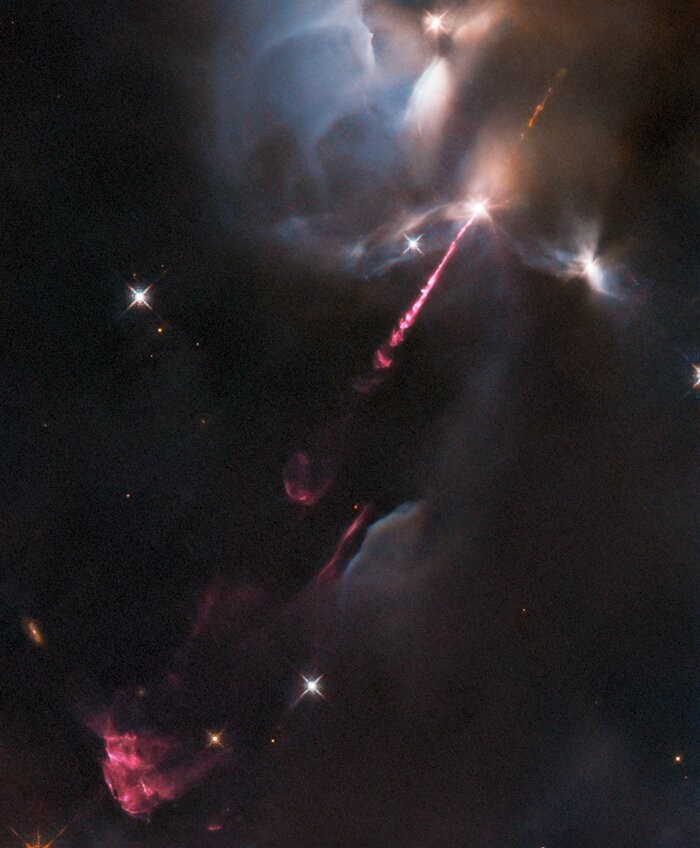
A magnificent image of a laser-like jet of gas blasting from a very young star has been caught by the Hubble Space Telescope. Hubble's Wide Field Camera 3, one of the space telescope's five scientific instruments, captured the image. The photograph depicts the Herbig-Haro object HH34, which is 1,250 light-years away from Earth. Head here to read more about it.
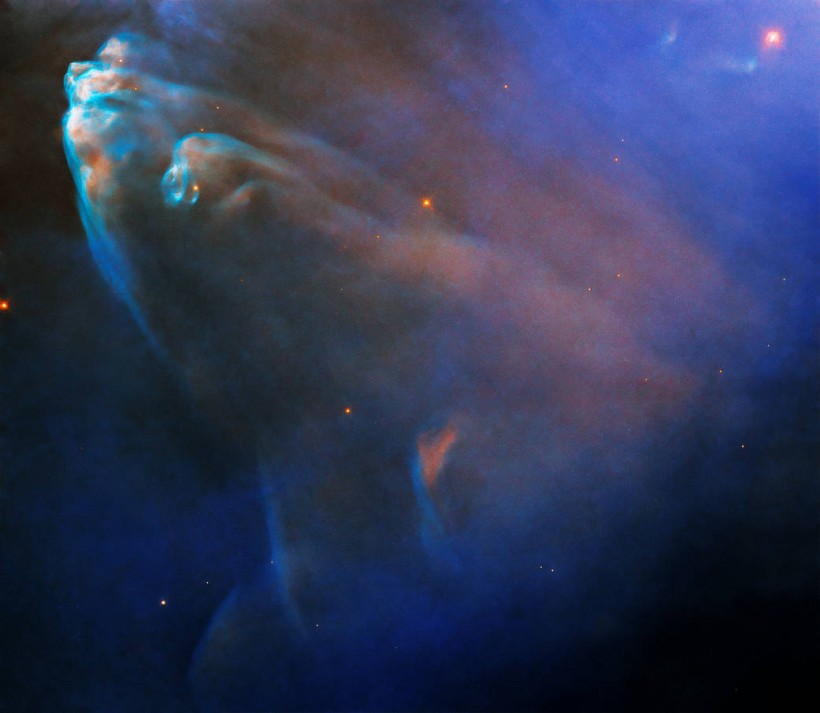
The telescope caught breathtaking gas clouds within the Running Man nebula complex. The Hubble Space Telescope's favorite subject to photograph is nebulae, and these pictures have helped scientists better comprehend what they look like. It obtained this photograph of a Herbig-Haro object known as HH 45. Click here to learn more.
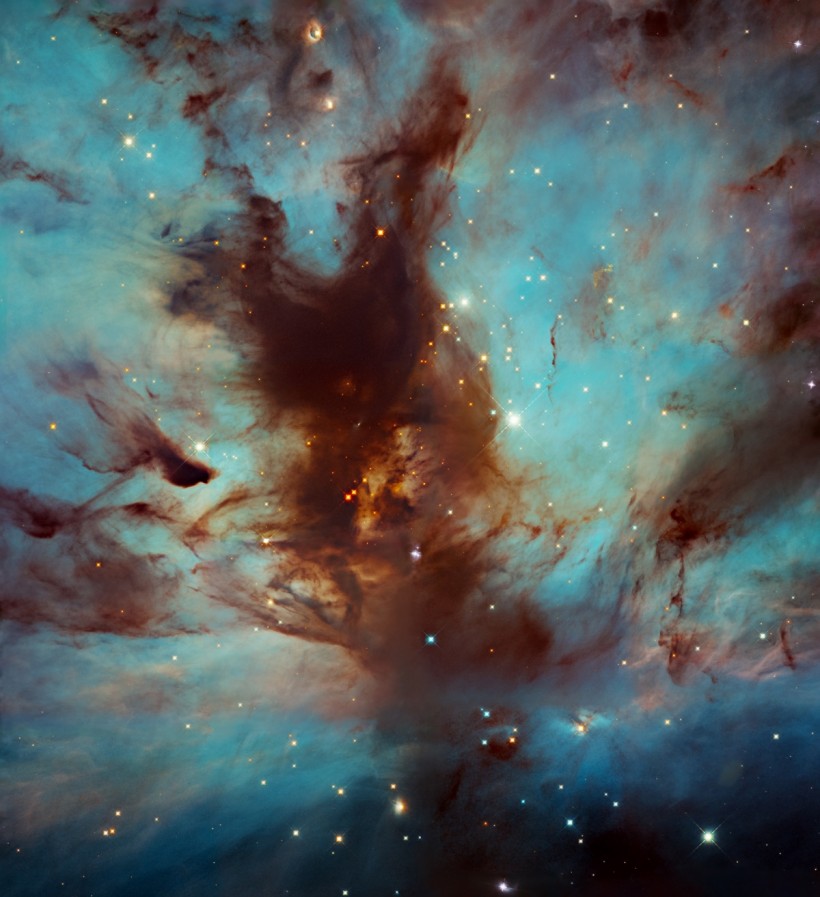
NASA’s Hubble Space Telescope captures another Flame Nebula.
The Hubble Space Telescope captured a stunning image of the Flame Nebula, officially known as NGC 2024. NGC 2024 is a large star-forming region situated around 1,400 light-years from Earth in the constellation Orion. One of the most active Milky Way constellations visible in the night sky is the Orion complex. To learn more, click here.
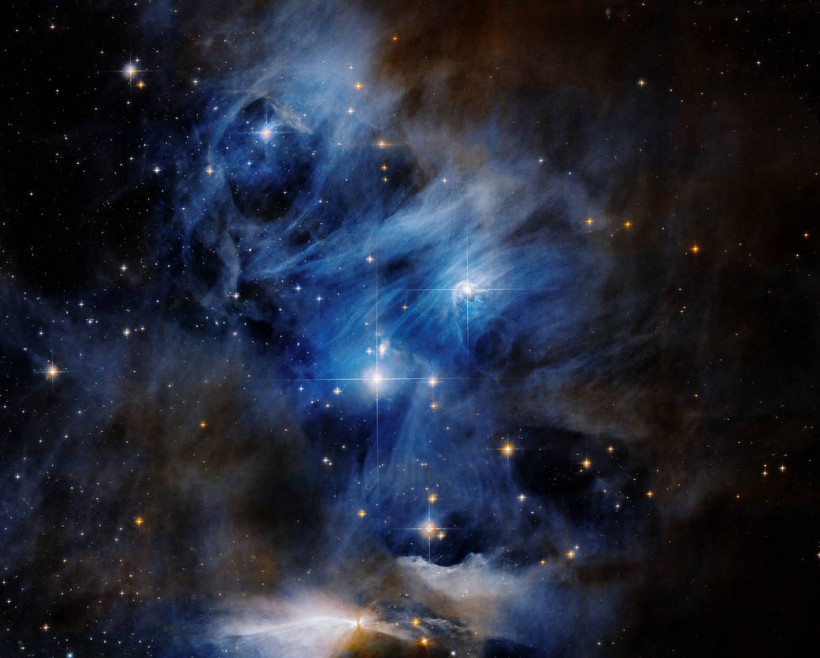
The image above from the Hubble Space Telescope illustrates one of the Chameleon Cloud Complex's three segments. Hubble's Advanced Camera for Surveys and Wide Field and Planetary Camera 2 were used to capture the image. Head here to learn more.
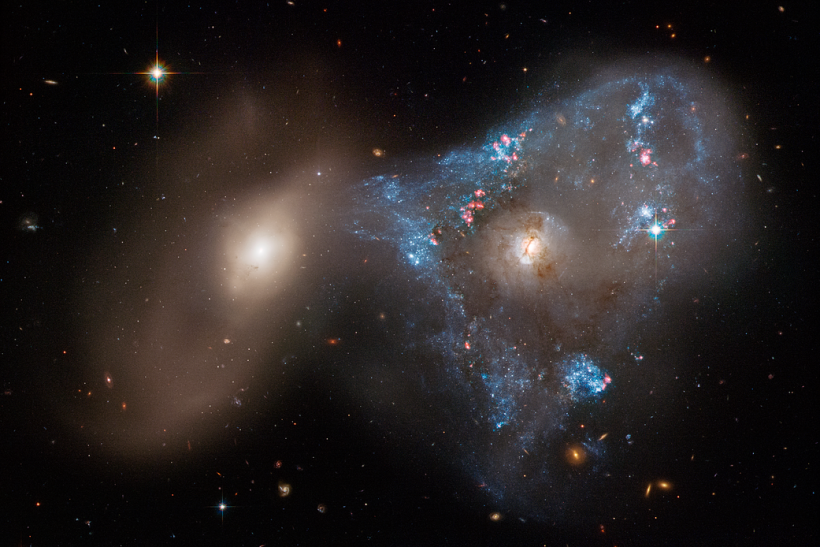
According to NASA, the image above depicts a "spectacular head-on collision between two galaxies" that fueled the extraordinary triangular-shaped star-birthing frenzy. The NGC 2445 is the more dazzling spiral galaxy on the right, while the NGC 2444 is on the left. Arp 143 is their collective name. To read more about it, click here.
Related Article: #SpaceSnap Throwback: Hubble Space Telescope Celebrated Its 26th Birthday With This Shot of the Bubble Nebula













